Hearing Aids
Why Hearing Aids Matter?
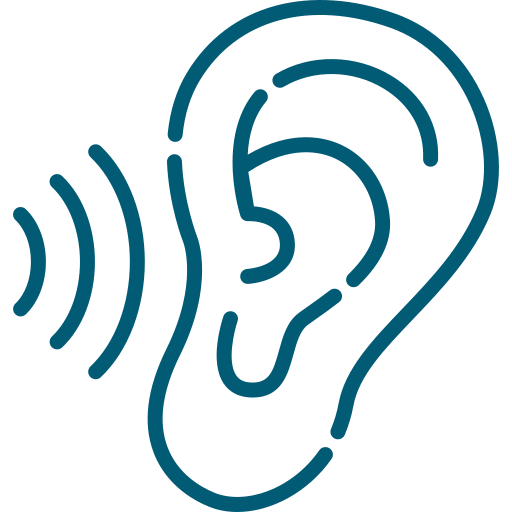
Gradual Hearing Loss Is
Often Ignored

Untreated Loss Affects
Mental Health
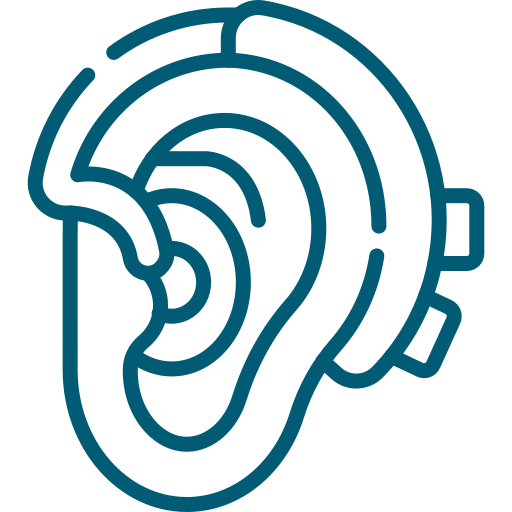
Modern Hearing Aids Are
Discreet & Smart
What Kind of Hearing Loss Do You Have?
Problems in the outer or middle ear that prevent sound from reaching the inner ear.
Common Reasons:
Earwax blockage
Middle ear infection (otitis media)
Perforated eardrum
Fluid buildup
Abnormal bone growth (otosclerosis)
Symptoms:
Muffled or soft sounds
Sudden or gradual loss of hearing in one ear
A feeling of pressure or fullness in the ear
Treatment:
Often treatable through medications, earwax removal, or minor surgery.
In rare cases, hearing aids may be recommended if the issue cannot be medically corrected.
Damage to the inner ear (cochlea) or the auditory nerve.
Common Reasons:
Age-related hearing loss (presbycusis)
Noise exposure
Head trauma
Certain medications
Congenital conditions
Symptoms:
Difficulty understanding speech (especially in noise)
Tinnitus (ringing in ears)
Sounds may seem distorted or unclear
Treatment:
This type of hearing loss is permanent.
Digital hearing aids are the most effective solution for improving communication.
A combination of both conductive and sensorineural hearing loss.
Common Reasons:
Existing sensorineural hearing loss made worse by an outer/middle ear issue (like infection or blockage)
Symptoms:
A mix of symptoms from both conductive and sensorineural loss
Hearing may improve slightly with treatment of the conductive component
Treatment:
A combination of medical management (for the conductive part) and hearing aids (for the sensorineural part)
Smarter Hearing with Modern Tech
Reconnecting You To The Sounds And Conversations That Matter



Digital Speech Clarity
App-based Controls
Remote Adjustments from Home
Bluetooth Phone & TV Connectivity
AI-powered Adaptive Settings
Choose the Right Hearing Style for You
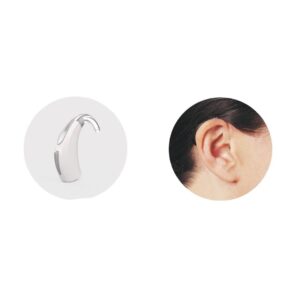
BTE (Behind the Ear)
Behind-The-Ear (BTE) hearing aids are worn comfortably behind the ear and are connected to a custom earpiece inside the ear canal through a small tube. This style is highly versatile and suitable for all ages and most degrees of hearing loss, including severe to profound. BTE devices are durable, easy to handle, and often come in various colors. They also support advanced features like Bluetooth, rechargeability, and directional microphones.
ITC (In the Canal)
In-The-Canal (ITC) hearing aids are custom-made to fit partially in the ear canal. They are less visible than BTE models but still large enough to include features like volume control and wireless connectivity. ITC aids are suitable for mild to moderate hearing loss and are a good balance between functionality and discretion, making them a popular choice for many users.
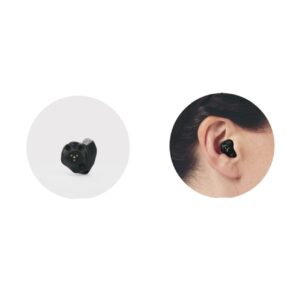
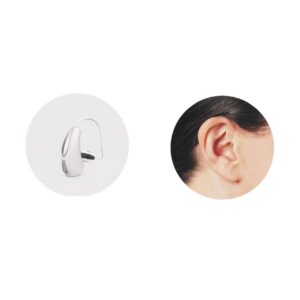
RIC/CRT (Receiver in Canal)
Receiver-In-Canal (RIC) or Canal Receiver Technology (CRT) is one of the most popular and modern hearing aid styles today. These are mini BTE devices where the receiver (speaker) sits directly in the ear canal, connected to the main device by a thin wire. This design provides better sound quality, especially in noisy environments, and supports features like AI, Bluetooth, and remote adjustments. RIC aids are lightweight, discreet, and suitable for mild to severe hearing loss.
CIC (Completely in Canal)
Completely-In-Canal (CIC) hearing aids are custom-fit and sit deep inside the ear canal, making them almost invisible from the outside. Designed for mild to moderate hearing loss, CIC devices offer a discreet solution for users who prioritize appearance. Due to their small size, they may have fewer manual controls but still deliver excellent sound clarity in quiet environments.
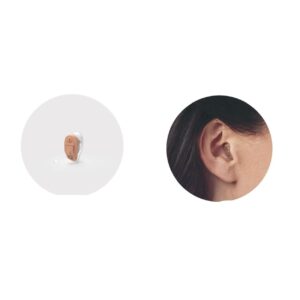

IIC (Invisible in Canal)
Invisible-In-Canal (IIC) hearing aids are the smallest and most discreet hearing aids available. They are placed even deeper in the ear canal than CIC models and are virtually undetectable when worn. IIC aids are best for mild to moderate hearing loss and for those who want the most cosmetically appealing solution. Due to their size, they may not include advanced features or suit individuals with narrow ear canals or severe hearing loss.
ITE (In-The-Ear)
In-The-Ear (ITE) hearing aids are custom-made to fit entirely within the outer portion of the ear. Slightly larger than ITC models, ITE devices are easier to handle and can accommodate more powerful components, making them suitable for individuals with mild to severe hearing loss. Their larger size allows for additional features such as volume control, programmable settings, and wireless connectivity. ITE hearing aids offer a good balance between visibility, functionality, and comfort, and are a great option for users who want advanced features without wearing a device behind the ear.
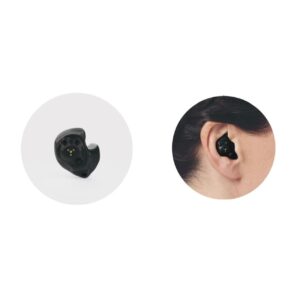
Get Started With Karnaadhar
Get started with Karnaadhar today and take the first step toward better hearing, clearer speech, and improved quality of life.
Karnaadhaar
Shop no. 4, Madhushree CHS, Plot No. 33, Sector 40. Seawoods West, Opp. Kendriya Vihar and DMart, Navi Mumbai Navi Mumbai (New Mumbai),Maharashtra,India
Other Pages
- Home
- Services
- About Us
- Reviews
- Contact Us
Important Links
- Terms and Conditions
- Privacy Policy
- Disclaimer
Contact US
-
Prashant M. Kamble
+91 9820217877 -
Farah P. Kamble
+91 9820017639 - karnaadharmumbai@gmail.com
- 2025 Hearing Karnaadhar. All rights reserved.
